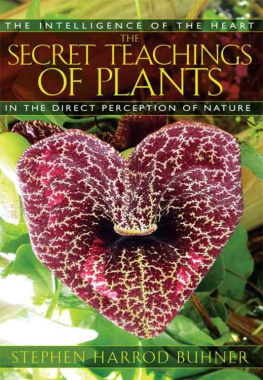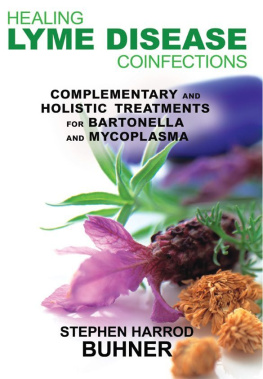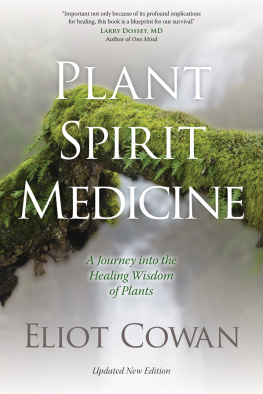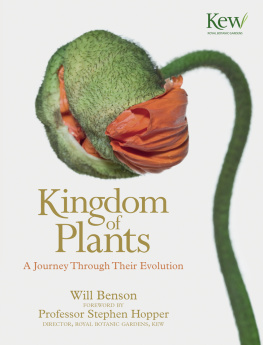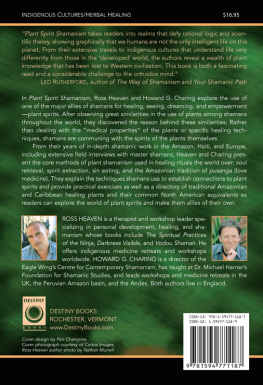
For My Teachers
For Creator
For Grandmother Earth
For the Plants

ACKNOWLEDGMENTS
S o many people affect a life and a work that it is not possible to acknowledge them all without a listing as interesting and ponderous as a phone book. But there are many people who helped in the birthing process of this book and I want to thank them here.
The medicine people who had the courage to share their understanding before they died, particularly Maingans and Owl Woman; my great-grandparents, C. G. and Mary Harrod, for reasons that are clear in the book; my grandmother, Edna Buhner, for teaching me the meaning of friendship; my son, Benjamin, for his companionship; my wife, Trishuwa, for endless late-night conversations and suggestions and support; Brooke Medicine Eagle for her courage, endless devotion to her path, and visions of the pipe; Wabun Wind for her strength of character and many phone conversations of support and education; Ed Canda for 15 years of friendship, mentoring, and companionship as an ecstatic; Rick Rinehart and Toni Knapp at Roberts Rinehart for believing in the book; David Rockwell for his integrity and insight in Giving Voice to Bear; Cyncie Marini for her wonderful paintings; Catherine Hunziker for introducing me to the plants and thus beginning the journey; Kelly Kindscher and Bill Lyon for their early reviews and their writing; and John Dunning for friendship and wisdom and reading endless early drafts of my writing and not laughing or even smiling because he knew how easily the small flame of hope can sometimes be extinguished.

FOREWORD
By Brooke Medicine Eagle
A t a time when one of the most poignant issues for the family of two-leggeds is reacquaintance with the sacred, Stephen Harrod Buhners book offers a wonderful sense of that journey. His own process of deepening that experience, which he shares throughout the book, and his discourses on the nature of the human quest for the sacred are profoundly useful to anyone who seeks wholeness and holiness. Whatever your specific mode of seeking knowledge of the sacred, this book will help you deepen it into greater knowledge and, more especially, into wisdom. For this book is not simply a book of facts, it is a book of experience, of knowledge deepened into wisdom. And like all wisdom, it teaches you not only about the specific subject (in this case the sacred use of plants) but also how to live a good life. It generates from the simplest things a profound understanding of sustainable, harmonious living. And this understanding, this knowing, is the most valuable thing in our world today.
Sacred Plant Medicine beautifully expresses an Earth wisdom frame of reference, not only in the extensive quotations from native elders but also in the way the information is given, the very way Stephen has approached his own learning. He makes it clear that one does not have to be of a certain color or race or ethnic background to seek and find a way of being in harmony with this North American land. It seems natural to seek this ancient herbal knowledge from native people, yet we must awaken to our full humanity and understand that spiritual Earth wisdom is everyones birthright. We have only to devote our attention to its revelation. To find harmony, we must awaken to this ancient vibrant potentiality.
Stephen notes that, It is difficult for people coming from a Western perspective to understand the mindset necessary to be in this kind of [sacred] relationship with plants. As you read through the book, you will find yourself steeped in that mindset, will find it seeping in through the cracks we have made between us and other lifeforms. You will joyfully awaken to these ways that are natural to all human beings. If you travel this road with Stephen long enough, you will feel something special, ancient, intrinsic, stirring inside of you.
Sacred Plant Medicine offers us ways of healing the greater body of the Earth by focusing our attention where the support for human life beganwith the plant people. Every chapter is an eloquent expression of the almost magical power of truly listening to the life around us, of honoring the vital consciousness in all things, of deeply respecting the wisdom of all life. Our salvation obviously is not in the conquering of nature, as has been practiced now for generations with dire consequences, but in becoming masters of the wilderness as some have described the indigenous peoples who have through time understood fully how humans are woven into the web of life.
Most refreshing and empowering in what is expressed here is that we do not need advanced university degrees or to study with the highest gurus to heal ourselves and our planet. We need simply to learn the feminine lesson of opening ourselves to the life immediately around us, which will remind us to remember the deep knowledge we possess as a birthright.
Our prophecies have long told us that the real teachers of this new time will be the farmers and the people whose hands hold the life that sustains us. And so I was glad to read in Stephens final chapter the words of Bill Mollison, who is one of my models for a good life. Bill is devoted to helping us rebuild a sustainable culture (Permaculture) through creating sustainable agriculture and lifeways. In his wonderfully outrageous way, he encourages us to read the book of nature and to use the rest of the books for compost. My elders have said to me that the trees are the teachers of the law, and I have long contemplated what this means. As I grow less ignorant, it is obvious that the true university is the forest, where a sustainable, rich life is evident to all who will engage this world directly and openly.
Not only the trees, but all the plant peoples, have much to teach us. They are our forebears on this sweet Earth, having made a hospitable place for us through their cycles of oxygenation and water. In addition to this material symbiosis, they have also integrated the emotional issues that we two-leggeds struggle with so often. By partaking of their vibratory intelligence through ingestion as well as through communion, we can become more whole and integrated ourselves, and thus extend a healing vibration to the life around us. For it is in the emotional healing of our relationship issues that the world will become whole.
As this egg of the new time cracks open, we must rebirth ourselves into lifeways that are in good relationship and will sustain all life over time. What we have to gain is not just the averting of disaster, but a renewed life of beauty, abundance, radiance, rich greenness, and bird songa true gift to the children of seven generations. We will be happy as our mother Earth is happy. The Christian Bible tells us that the humble will inherit the earth; in these days of crisis, we can understand this quite easily when we realize that the word humble comes from the same root word as humus and means of the earth, or close to the earth.
In Buffalo Woman Comes Singing, I relate the story of the coming of White Buffalo Calf Pipe Woman and the holy gifts she brings us through the sacred pipe. This pipe, which represents oneness and wholenessa healing for the Earthis one of our most potent ceremonies. Stephen tells of his loving relationship with the pipe and the many ways in which he has deepened his relationship with it. He clearly conveys the understanding of how sacred an act the use of the pipe is. It is not about playing Indian or impressing your circle. The pipe ceremony is for honoring and praying for All Your Relations, something that is vitally important in this time. The commitment to the pipe is to use it for healing and to be willing, at any time, to go wherever you are called to perform that ceremony. The pipe carrier is a servant of the people, committed to restoring the web of life.
Next page

